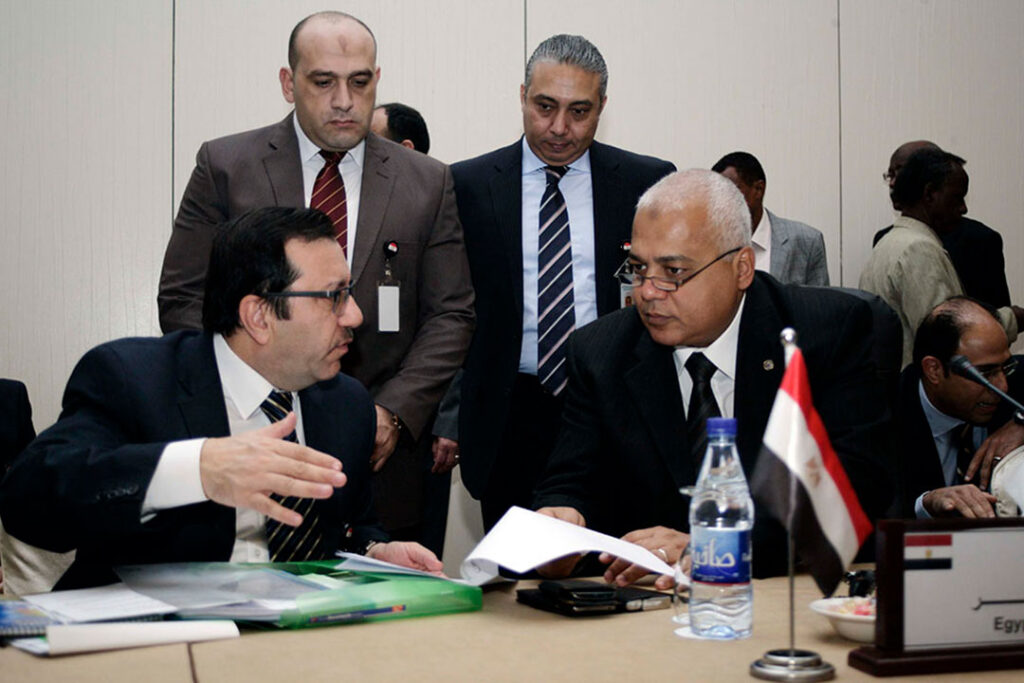Tilling the Sinai’s sands may reap the peace dividend.
by Megan Detrie
The Sinai Peninsula, Egypt’s large triangular stretch of desert that borders Israel and the Gaza Strip, is a renowned site of conflict—and the focus of the new Islamist-led government’s plan to resettle 1m Egyptians and turn 1m acres of desert into farmland. The five-year plan will seek to relieve food insecurity, urban overcrowding and national unemployment (which reached 12.6% this year, according to Egypt’s official statistics agency). Critically, the programme may also diminish the region’s escalating conflict.
During last year’s Arab Spring, Sinai residents routed most defence forces from the region, creating a security vacuum that the new government is struggling to control. Since then, the Sinai has attracted radicalised militants from all over the country. With few economic opportunities, this barren landscape is home to lucrative smuggling tunnels transporting weapons and supplies into Gaza, and people and drugs into Israel. In September 2012 the Egyptian government cracked down on smuggling tunnels along its border with Gaza, after an August 5th militant attack in the Sinai left 16 Egyptian soldiers dead.
This August the agriculture ministry announced that 41,000 acres of new farmland in the northern Sinai would be available for investment. Of this, 25% is earmarked for Sinai residents, a sign the government is seeking to include the area’s marginalised Bedouins. The Sinai Bedouins, who account for the majority of the Sinai’s 400,000 population, have some of the highest levels of poverty in the country, according to the World Food Programme. Some have engaged in black market activities to survive, while others joined the ranks of militants, destabilising the area.
Only about 6% of Egypt’s total area is agricultural land, according to the Egyptian Centre for Economic Studies (ECES). The Nile Delta and Valley are blessed with Egypt’s most fertile soil, but cursed with one of the world’s highest population densities. Nearly 1,500 people live on each square kilometre of land in the delta and valley, compared to Egypt’s average of 81 people per square kilometre, according to the United Nations Food and Agriculture Organisation.
For decades, Hosni Mubarak’s government implemented policies that reclaimed roughly a million acres of desert including parts of the Sinai. This reclaimed land now makes up 25% of the country’s arable land, according to the American University in Cairo’s (AUC) Desert Development Centre. The government “parachuted” people from all over the country, typically graduates of agricultural universities and Nile River farmers, said Richard Tutwiler, the centre’s director.
To accomplish Sinai’s agricultural project, the government developed the Al-Salam canal. Fresh Nile water and the delta’s agricultural drainage water are channelled under the Suez canal into northern Sinai. The $2 billion project has so far turned 180,000 arid acres into groves of peach, orange and other fruit trees.
But for many of the farmers who bought land from the government at low rates or with long-term cheap mortgages, turning sand into profit is a struggle. “You have to ask, short-term and long-term, is this sustainable?” Habib Ayeb, an AUC researcher, asked. “These farmers can’t replenish soil quality. They have no time, money or organic materials.” When the land stops producing they will not be able to afford to move to new plots of land, he added.
Most traditional small farmers—like those found in the delta region, where the Nile channels off and empties into the Mediterranean Sea—till a single acre of land, which is often split among multiple family members. Desert farmers are allocated larger plots of between two-and-a-half to five acres.
While much larger than the typical size of a delta farm, the land is far less productive. Farmers often cannot afford pesticides and lack access to bank loans needed to modernise their equipment and
bolster their productivity.
To survive, desert farmers plant higher-earning permanent crops such as fruit and nut trees that require far more land than annuals such as rice or wheat. Here, desert farmers have an advantage
over traditional farmers. While purchasing orange and peach trees may cost three times as much, according to Mr Tutwiler, their fruit can net three or four times the prices in markets.
Even so, smallhold farmers may see little benefit as they have limited access to international or even national markets. Those farmers that grow export crops typically end up selling their goods at a reduced rate to middlemen wholesalers. The only winner so far is desert agri-business, which accounts for the majority of Egypt’s agricultural exports, Mr Ayeb said.
These agri-businesses grow luxury crops such as strawberries for European supermarkets, but have done little to create jobs or ease rising food prices. In the early 1980s Mr Mubarak promoted large agri-businesses by subsidising their fuel and water and easing their access to capital. The idea was to provide a source of foreign reserves through export while creating employment and bolstering overall crop production. Instead, it may have even raised domestic food prices because resources that could have gone to small staple-producing farms were diverted to these giant farms.
“This form of farming is highly mechanised,” said Magda Kandil, the ECES executive director. “It didn’t really employ many people, and because of that, the wealth didn’t trickle down.”
To enhance the lot of desert small farmers, the government must create an inclusive scheme that offers equal access to water, pesticides and machinery as well as funding, Ms Kandil said. Were they to find that balance, this new desert reclamation plan would do much to improve the livelihoods of one of Egypt’s most marginalised populations, the Bedouin, while also bolstering security in the Sinai.



